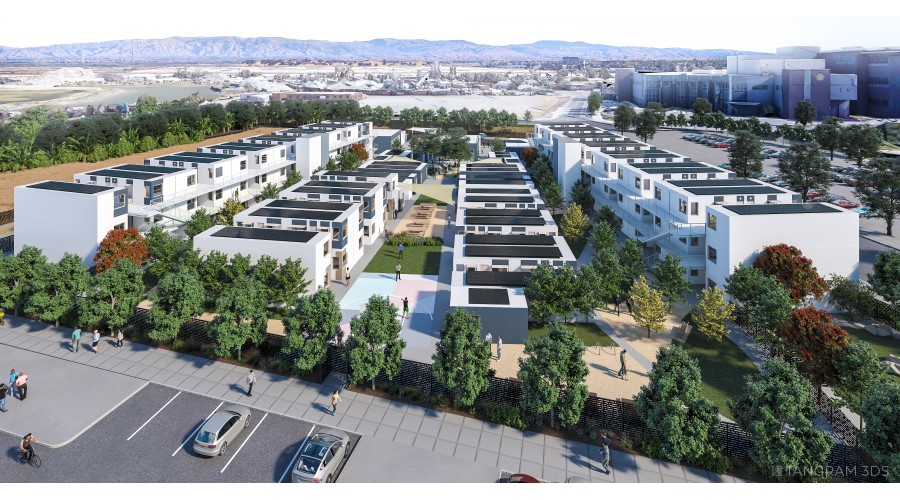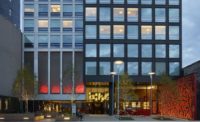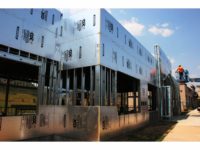Efficient Modular Design Becomes Homeless Solution

All photos courtesy of C.C. Sullivan.
From San Mateo County: "The Navigation Center will provide a 240-bed, state-of-the-art shelter east of Highway 101 off of Maple Street, and will provide intensive counseling and other support services. The completed facility will include private sleeping units, shared toilet/showers, dining services, and support modules as well as outdoor areas for activities."
"The project objective is to rapidly develop and install the Navigation Center on a 2.5-acre, undeveloped site located at 1469 Maple Street in Redwood City, Calif., that provides a safe and dignified atmosphere to serve the needs of the clients and social services operators for decades. In addition, 10 acres along the nearby waterfront will be converted into future park space, waterfront recreation and open space.”
"The County goal is to achieve functional zero homelessness, meaning that anyone who desires shelter can access it through an array of County facilities and programs.”
Project Background (from the Architect)
The project team includes San Mateo County, XL Construction, and architect The Office of Charles F. Bloszies.
The work debuts in one of the first Bay Area jurisdictions to benefit from the second round of California’s Homekey program. About $55.3 million of Homekey 2.0 funding is invested in the modular Navigation Center for development and operation, according to the architect Charles F. Bloszies, FAIA, who designed the facility, working in collaboration with XL Construction.
“This idea is novel, but not experimental,” says Bloszies, who has calls his design solution for similar works by the name Step(1) Housing, and who has led the design of numerous navigation centers and supportive interim housing facilities in San Francisco, Mountain View, Palo Alto, and San Jose. “It stems from listening to unhoused people themselves and to the social service providers who have devoted their careers to taking on one of society’s most intractable problems: homelessness.”
The compact campus employs modular units to create individual sleeping units, most with private bathrooms, connected to other residents by shared services and community spaces. Instead of the congregate dorm-style shelters found in many U.S. cities, this approach gives each resident a private, lockable, conditioned sleeping space.
Metrics from studies by social service groups, including Menlo Park-based LifeMoves, show this type of supportive setting works very well, with average resident stays of three to six months. The project has been developed and managed by the San Mateo County Project Development Unit (PDU) under a design-build contract employed for all construction undertaken by the county.
Background: A Path to Housing
According to San Mateo County Board of Supervisors member David Canepa, the Redwood City facility’s opening next week, is “a huge, huge, huge day of celebration.” He added, “It creates a path for us to take those people who are unhoused and to give them housing.”
For a prior 100-unit project in Mountain View, Calif., also designed by the Office of Charles F. Bloszies, FAIA, Gov. Gavin Newsom said the approach “is exactly the kind of project that needs to be replicated, using modular prefabricated buildings that can be stood up at blazing fast speeds and at a fraction of the cost of normal housing.The new Redwood City solution is hailed as “revolutionary” by County Executive Officer Michael Callagy, who said in a statement, "This will change the face of homelessness in our county. This is a tremendous opportunity to help our entire community by ensuring that every homeless individual who wants shelter can find it and [is] treated with dignity and respect. These are real people with real issues and these funds will change lives.”
Looking for a reprint of this article?
From high-res PDFs to custom plaques, order your copy today!








